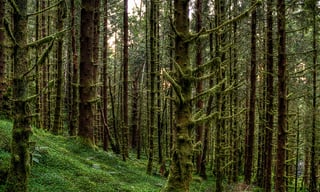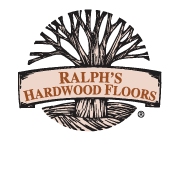 In this two-part blog we explain how a beautiful tree in the forest becomes a beautiful floor in your home. Part one focuses on the process to turn a tree in made into floor boards while part two explains the installation and finishing process.
In this two-part blog we explain how a beautiful tree in the forest becomes a beautiful floor in your home. Part one focuses on the process to turn a tree in made into floor boards while part two explains the installation and finishing process.
When I look at a hardwood floor I can often envision the wood it came from and sometimes I think I can even see the tree it came from. And you need a lot of tree to make a floor.
How many trees?
Imagine a tree about 18 inches wide and about 10 feet of trunk. Not a giant tree but not a small one either. It will create something close to 100 square feet of flooring, depending on the quality of the wood once it is milled. This means for an average Ralph’s floor; we need 5 trees to create the flooring.
A trip to the mill
After being cut, raw logs are sent to a saw mill to be further cut into boards. At the mill, the first machine is a debarking machine which removes the bark from the outside of the log, from one end to the other, all the way around in one continuous motion. Once the log is debarked and smooth, it is fed into a rip saw to be cut into boards.
Cool, lasers…
Before a single cut is made on the rip saw though each log is scanned by a laser to determining how to best cut it up to produce the best and most usable boards. There are many ways to cut a log into lumber but the most common are: plainsawn, riftsawn, and quartersawn.
If the goal is to produce mostly plainsawn boards, the log will be turned 90 degrees after the first few cuts to keep the grain at the correct angle. When more quartersawn or riftsawn boards are needed, the log may be cut from four “corners” of the log, yielding some riftsawn and some quartersawn boards or may be cut at an angle from the outside edge to produce only boards with a specific grain. Each of these sawing methods produces progressively fewer usable boards per log, which is why rift and quartersawn boards tend to cost more.
Each of the boards produced is then sent to the planer in order to get them to a uniform thickness. Usually the boards are cut to slightly over one inch thick and about half an inch wider than their finished widths. This extra leaves room for the moulder to shave off a little and for shrinkage when the boards are dried. Multiple widths also allow for most yield from the boards.
The moulder planes the boards to an exact thickness and creates the tongues and grooves that will enable them to fit together so precisely. End matching is the last machining step and it puts tongue and groove on the ends.
Waste not, want not
Milling wood for hardwood floors can create lots of extra pieces but everything is used for something. Smaller or irregular pieces are used for trim while bark and shavings are sent off to be used for paper or mulch. In some mills sawdust and shavings are for heat or power. And just like with the bark, any thin strips sliced off are reused too, either by being sent to the chipper or sent to be made into trim.
Removing defects & drying
Defect cutting occurs before it goes through the moulder, cutting out cracks, large knots, and anything else you don’t want in the finished floor. Often the pieces are sorted into matching bundles. The kiln drying occurs after the material is rip sawn but before it is ran through the planer. Once the hardwood bundles are sorted, they are ready to be shipped to be made into your dream floor.
In the second part of this blog, we will describe how the boards from the mill and used to create amazing custom floors in your home.
Photo courtesy of Oyvind Hope















